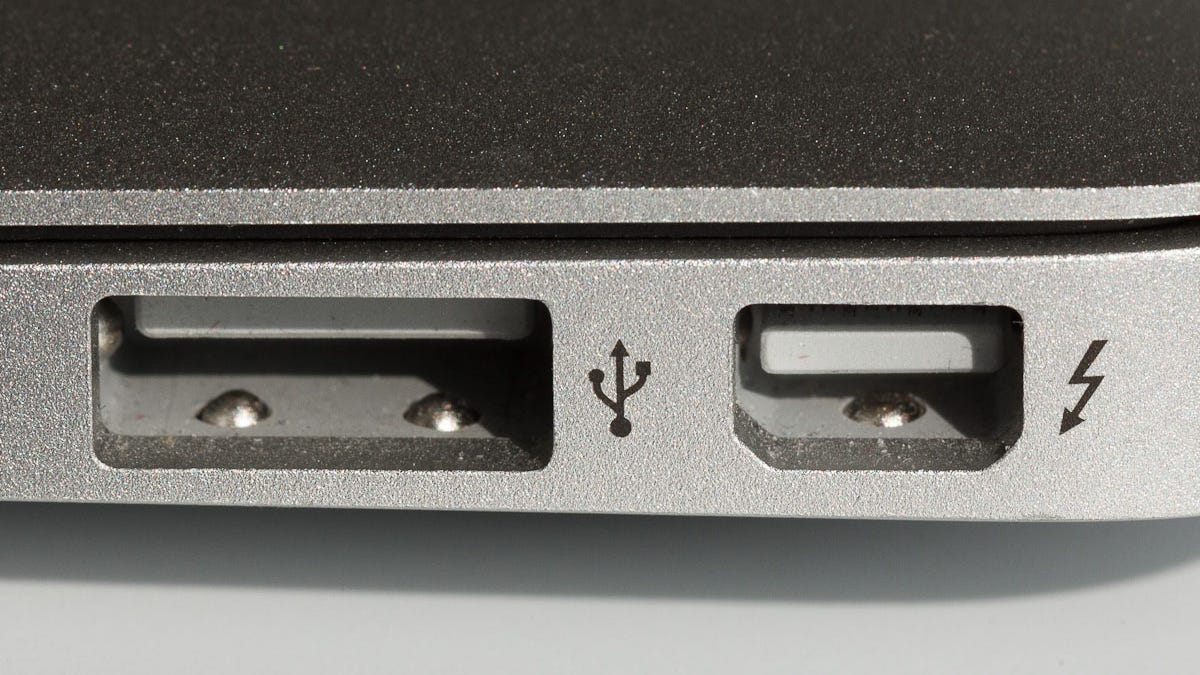Double-speed USB 3.0 to arrive next year
The first devices that take advantage of the new standard's 10Gbps data-transfer speed should arrive in 2014. Too bad for Thunderbolt.

Computing industry powers are doubling the data-transfer speed of USB 3.0 from today's 5 gigabits per second rate to 10Gbps.
The move will uncork speed bottlenecks of external SSD storage devices, open up options such second monitors, and help confine the even faster Thunderbolt interface to a high-end niche.
But it won't happen immediately. The specification should be done in mid-2013, which "will enable initial products to appear in late 2014 with a much broader availability of products in 2015," according to the USB 3.0 Promoter Group, which announced the faster Universal Serial Bus work today at the CES show.
That group's members are Hewlett-Packard, Intel, Microsoft, Renesas Electronics, ST-Ericsson, and Texas Instruments. It's a powerful alliance, to be sure, but it's hard to move the entire electronics industry rapidly to a new standard. The specification for USB 3.0, aka SuperSpeed, was finished in 2008, but it wasn't until four years later that USB 3.0 really took off as a standard part of Intel hardware in 2012.
To take advantage of the double-speed USB 3.0 interface, devices such as computers, hubs, and digital cameras will need new USB controller hardware. However, the new version of USB 3.0 uses the same connectors, so existing USB devices can be plugged into the higher-speed ports.
USB 3.0 cables may or may not work. "Existing SuperSpeed USB cables are not certified to operate at 10 Gbps; it is possible that some existing SuperSpeed USB cables may be capable of operating at 10 Gbps," the group said.
USB has been a remarkable success, spreading from the computer industry to many other segments of the market including cars, mobile phones, and TVs. The Universal Serial Bus Implementers Forum (USB-IF), which oversees the standard, said there are more than 720 USB 3.0 devices
Another area of development: upgrading USB's ability to carry electrical current so it can be used to charge mobile devices faster and even power laptop PCs.
There's some good news for Thunderbolt, which is useful today by virtue of its convenience and performance. Each Thunderbolt port offers dual 10Gbps channels and the ability to daisy-chain multiple Thunderbolt devices. Its utility is expanding with the arrival of optical Thunderbolt cables. And Thunderbolt's future also is warmed by Intel's plan for faster versions of the standard.
But so far Thunderbolt is almost completely nonexistent on personal computers besides Apple models, and cables remain expensive. USB is a necessity, but Thunderbolt remains a luxury.
The new USB standard also could make life harder for another new high-speed communication standard, PCIe Cable.

